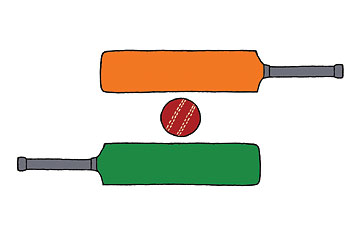
On the eve of Indian independence, a senior nationalist leader wrote an essay with the intriguing title: "Will Cricket Quit India with the British?" Cricket, insisted B.V. Keskar, could "only thrive in the atmosphere of English culture, English language and English rule." The Indians who played the sport were brown in color but white in spirit, said Keskar, such as "the Maharajas, the rich and the snobs." Cricket would "never be able to survive the shock of the disappearance of British rule from our country," he asserted. Its place would be taken by working-class sports such as soccer and athletics.
Postcolonial India has proved Keskar wrong. In the 60 years since his prediction, the popular following for cricket has grown ever bigger. The game is patronized by the maharaja and the milkman, the snob as well as the socialist. Gender, class, religion, caste, language — all of which constantly divide Indians — are irrelevant when it comes to cricket. When an important match involving the national team is telecast, the audience is in the range of 150 million (and perhaps twice that number if the opponent is the old enemy, Pakistan). India's most successful cricketers are worshipped as only Bollywood stars and Hindu deities are.
What explains the extraordinary appeal in India of this most English of games? To begin with, it fits easily with the rhythms of what is still, for all its gleaming malls and software companies, essentially an agrarian civilization. International cricket comes in two versions: one played over an entire day, another played over five days. Explaining the lukewarm appeal of cricket in the U.S., a British writer once remarked that "time is money here, and there is no denying that much of that valuable commodity is egregiously cut into ribbons at cricket." Not so in India, where six hours, or even 30, is a bare wink of an eye to a people trained to think in cosmic rather than clock time.
In cricket, every over or wicket or session or day is followed by intervals that vary from a minute to hours. That the game is slow-moving resonates nicely with the Indian ethos. One can gossip and argue between overs and after the fall of wickets. Watching the game, with one's family at home or with friends on the ground, is a collective and participatory exercise, indulging the very Indian taste for chatter and disputation.
National pride also predisposes Indians in favor of cricket. It is the only sport at which they are other than hopeless. India, a nation of more than a billion people, wins on average just a medal or two at the Olympics. But, with cricket, it occasionally produces, as in Sachin Tendulkar, one of the world's best. Moreover, India can settle accounts with the sport's inventor, also once the country's colonizer. When India first beat England in England, after 40 years of trying, the nation rejoiced. On the team's return to Bombay a crowd of 150,000 turned out. The team then proceeded to New Delhi for an audience with the then Prime Minister, Indira Gandhi. Gandhi was known to keep Cabinet ministers waiting weeks for an appointment, but she knew the worth of a photograph with a victorious cricket team.
In recent years, Indian attitudes to time have begun to change, and the game with it. The one-day game has grown in appeal, especially after India unexpectedly won the 1983 World Cup, a victory that coincided with the arrival in India of satellite television. Last year, India won the inaugural World Twenty20 tournament. (In this newest version of the game, each side bats for only 20 overs, or 120 balls in all.) A Twenty20 match lasts a little over three hours — perfect prime-time viewing for the ever-growing middle class, watched after work and before going to bed. Indeed, the Indian Cricket Board has launched an Indian Premier League, where city teams composed of Indian and foreign stars play one another in the Twenty20 format.
In thinking of India's long, ever more intense, love affair with cricket, Brazil's obsession with football comes to mind — except that there are fewer than 200 million Brazilians and over a billion Indians. But while Brazil has won the most World Cups, global football is really run from Europe. In cricket, India is the popular as well as financial center of the world. There is so much money to be made in the new league that many foreign players are abandoning their own countries to flock to it. As the sociologist Ashis Nandy once remarked, "cricket is an Indian game accidentally discovered by the English."
Ramachandra Guha is the author of India After Gandhi: The History of the World's Largest Democracy